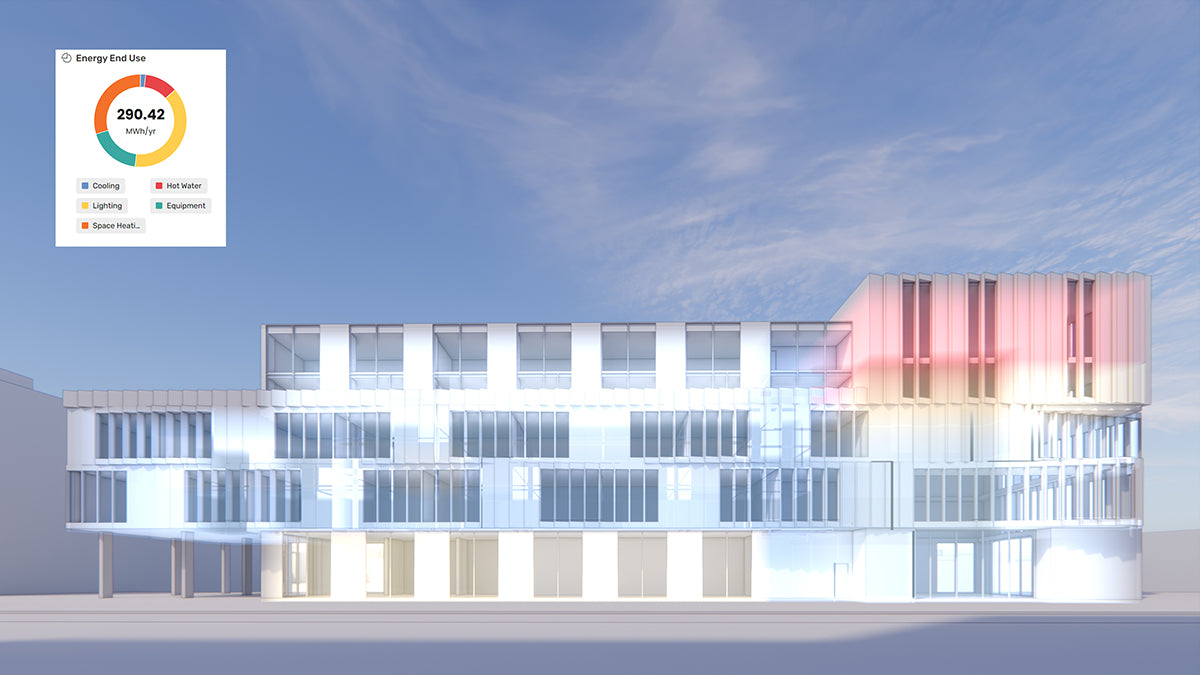Your Cart is Empty
Customer Testimonials
-
"Great customer service. The folks at Novedge were super helpful in navigating a somewhat complicated order including software upgrades and serial numbers in various stages of inactivity. They were friendly and helpful throughout the process.."
Ruben Ruckmark
"Quick & very helpful. We have been using Novedge for years and are very happy with their quick service when we need to make a purchase and excellent support resolving any issues."
Will Woodson
"Scott is the best. He reminds me about subscriptions dates, guides me in the correct direction for updates. He always responds promptly to me. He is literally the reason I continue to work with Novedge and will do so in the future."
Edward Mchugh
"Calvin Lok is “the man”. After my purchase of Sketchup 2021, he called me and provided step-by-step instructions to ease me through difficulties I was having with the setup of my new software."
Mike Borzage
An Interview with Joe Anand, CEO of MecSoft (VisualMill and RhinoCAM)
June 14, 2007 6 min read

Joe Anand is the CEO of MecSoft, the company that makes the famous CAM products VisualMill and RhinoCAM.
we have been the first to use the OpenNurbs technology and to write a full-fledged CAM plug-in for Rhino
The CAM market is fragmented with several small players. Many of them are selling good technologies but having problems creating a friendly user interface and delivering a product that doesn’t require the assistance of an expert in training and deployment. In this CAM world MecSoft is a bit of an exception: VisualMill and RhinoCAM are great products with an easy-to-use interface and one doesn’t need to share a cubicle with Joe Anand for two weeks just to start working with them. In order to learn the secret behind MecSoft and its products, I invited Joe Anand for an interview.
Joe, can you tell us a bit about yourself and your company?
Sure, let’s see – I got out of college with a masters degree in mechanical engineering with an emphasis on computer science. I remember the first computer program that I wrote was a design program for a rotary cam follower mechanism. This was early in the days of programming but that is when the CAD/CAM bug first bit me. After graduation, I got my first taste of commercial CAD/CAM with GE/Calma a company that pioneered 3D graphics systems in the early 80s in San Diego, CA. After working with their Robot Simulation software, I moved on to work for a company in Denver called Auto-trol Technologies. I initially wrote a product for the AEC (Architecture, Engineering and Construction) industry for them and later worked on their CAM product.
I made a proposal to Tony Affuso to
create a CAM for the PC. This was summarily dismissed and so I decided to do this on my own
My big break came when I was with Intergraph Corporation in the 90s when I somehow ended up to be in-charge of rewriting their entire surface milling product called MaxMill. Maybe it was that nobody else wanted to touch this!
Those were the heady days of new technical advances in both CAD and CAM. NURBS, Parametrics and a whole host of other advances made life quite exciting if you were a CAD/CAM techie then. In any case it was the right time to try new approaches to the problem of surface milling and we were able to produce a robust and fast surface milling product that emerged as one of their top selling product. After Intergraph started focusing on Solid Edge and moving resources away from their Unix based EMS product I moved back to the west coast to work for Unigraphics Solutions. After 4 years of exciting work with one of the best CAM systems in the world, I saw an opportunity to create a workstation class CAM product on the then lowly PC. I made a proposal to Tony Affuso, who was then the VP of Development (who by the way is now, the President of Unigraphics Solutions) to create such a product. This was quickly and summarily dismissed for various reasons and so I decided to do this on my own. Armed with nothing more than a second mortgage, a supporting wife (I better say this or I will get into trouble) and a belief that there was a definite need for a high quality and yet affordable product on the PC and, I launched MecSoft in December of 1998. It has been a fun ride since then – not much different from a roller coaster, I should say.
CAM software is traditionally expensive, difficult to use, and requires the support of a local reseller. MecSoft seems to be working to change that. Can you us tell how?
CAM systems can be treated as shrink-wrapped software and sold and supported as such
Interesting that you ask this question. This view of the CAM market is really something we have striven to change. I recall a conversation I had a few years ago with a CEO from another “traditional” CAM company. His view of the CAM market was that it was a “service software” market and that he required an extensive infrastructure to deliver, train and support customers on his CAM system. Our view at MecSoft is quite the opposite. We believe that if we designed the product, the delivery and the distribution systems correctly then CAM systems can be treated as “shrink-wrapped” software and sold and supported as such. This optimizes the entire supply chain in ways that a traditional CAM company simply cannot.
MecSoft is one of the few companies successfully selling CAM software through the online channel. Do you attribute this to the user friendliness of your products or to a better attitude of your customers?
the web is such a natural medium for software distribution, sale and support
This really goes back again to our view of the CAM market. The web is such a natural medium for software distribution, sale and support that we as CAM vendors would be foolish not to take advantage of it. We saw the value of this early on and have built our company around this opportunity. Any success we are seeing now is because it is indeed a very effective way of selling and supporting CAM systems – despite what some older stalwarts of the industry think!
And of course without customer acceptance of this model it would never work. Our first customers were early adopters who shared the same vision as us. But now with the advent of Web 2.0 this model is becoming the mainstream model and we are enjoying the benefits of perceiving this and acting on this before most others.
Your approach is not to implement CAD features but to facilitate the integration with CAD systems, for example, with the partnership with Alibre and the RhinoCAM product line. Do you have plans for further integrations?
our intent has always been to focus on our core-competency: creating world-class CAM solutions
We believe that there is a place for standalone CAM systems as well as fully integrated CAD/CAM systems. While we recognize a need for both such systems, our intent at MecSoft has always been to focus on our core-competency – that is – creating world-class CAM solutions. There are so many wonderful and talented CAD companies out there that it just does not make sense for us to try to compete with them. It is much better for our customers if we can leverage the synergies of best of breed organizations to create truly best of breed solutions. In the end the customer benefits and that really is our primary driver.
Rapid Prototyping technologies are becoming more affordable and therefore more commonly used. What will be the impact of those technologies on your products?
This is an interesting question. We are seeing some industries, which have traditionally used CNC machining for manufacturing parts, migrating towards these technologies. Jewelry manufacturing is a prime example. Various sources estimate that about 80-90% of all jewelry made in the world is manufactured using RP technologies today.
However these technologies come with their own set of problems and so are not a panacea or the right technologies for all manufacturing applications. We see these technologies co-existing with more traditional machining technologies and methods. We at MecSoft view the emergence of these technologies as opportunities. A case in point – we recently released a product called RhinoART, which utilizes non-traditional modeling techniques to complement the powerful traditional modeling capabilities of Rhino. Models produced with this product can then be manufactured using such RP technologies.
RhinoCAM is a very successful product. What has been your experience so far in selling a product to the Rhino community?
we have been involved with the Rhino community from the early days of Rhino
We have been involved with the Rhino community from the early days of Rhino – even before the first version of Rhino was released. In fact we were the first company to create a data transfer plug-in for Rhino, the first to use the OpenNurbs technology and also the first CAM vendor to write a full-fledged CAM plug-in for Rhino. We find that Rhino users are passionate about the products they use and are early but discerning adopters of new technologies. It is always an interactive experience dealing with them, typically characterized by a spirit of openness and cooperation. This makes working with and serving them a truly satisfactory and gratifying experience. It has been a great ride so far!
I would like to thank Joe Anand for sharing his thoughts with me today. If you have any questions for Joe or for Novedge, please leave a comment below and we will be glad to answer.
Franco Folini
Also in NOVEDGE Blog

How the AEC Industry Shifted Towards Essential Sustainable Building Design
August 15, 2024 4 min read
Read More
Unlocking New Realms of Design with Enscape 4.1: Introducing Impact Add-on and Lot More
August 02, 2024 2 min read
Read More
Explore Autodesk Revit 2025.2: New Features and Enhancements for Enhanced BIM Workflows
July 30, 2024 3 min read
Read MoreSubscribe
Sign up to get the latest on sales, new releases and more …


